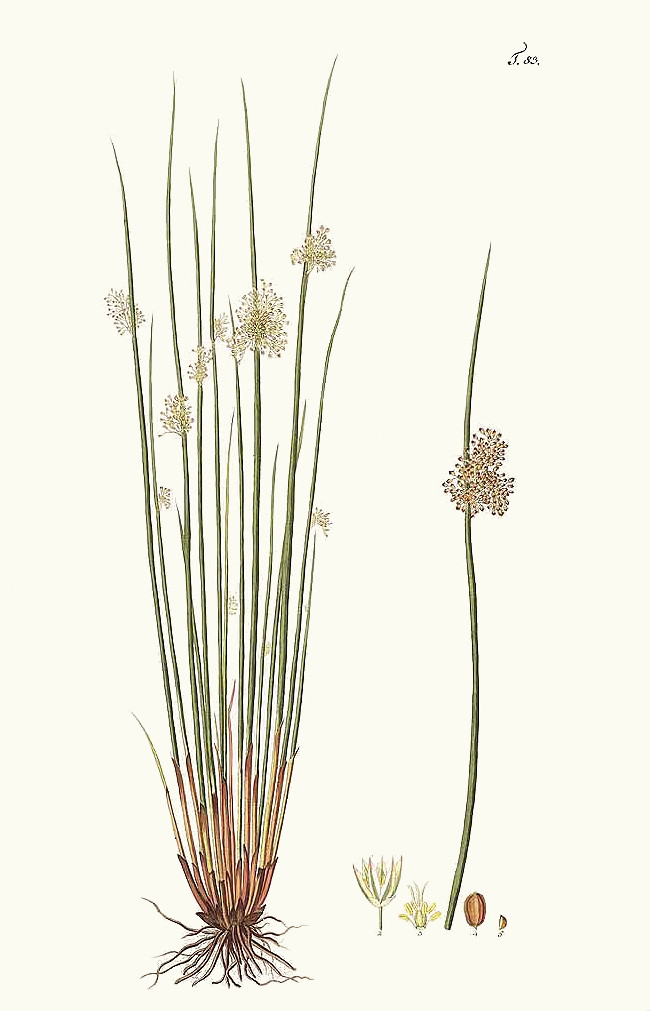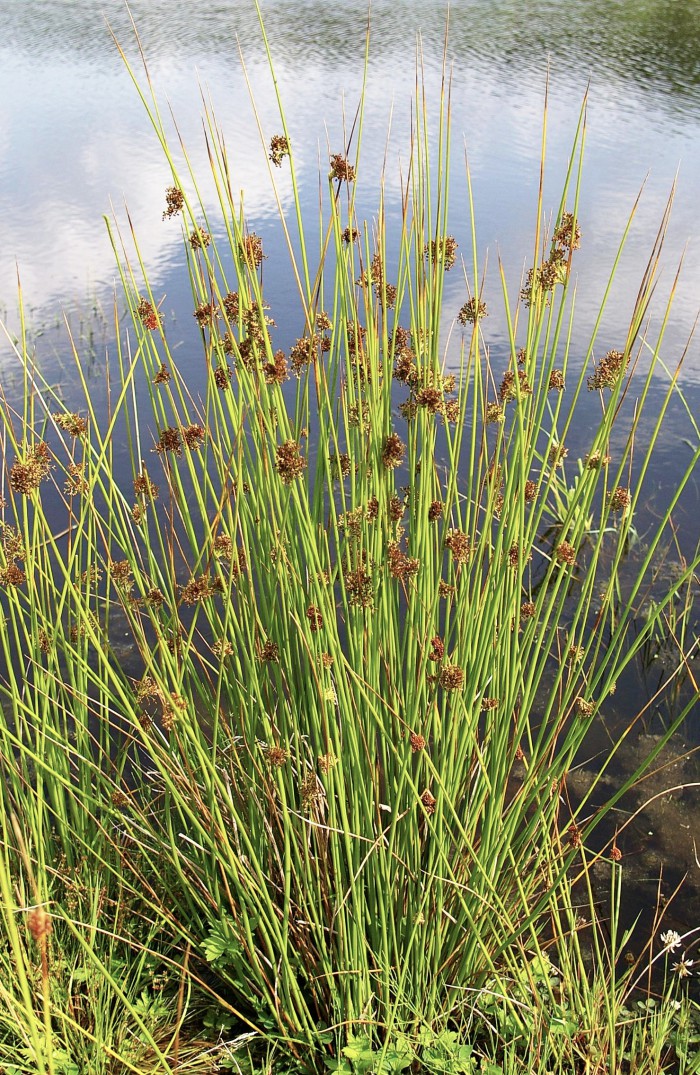Juncus effusus L. - Juncaceae - common rush, soft rush, Flatter-Binse
Perennial plant, up to 1m tall, native to the northern hemisphere and parts of South America, Africa, and Asia. http://www.efloras.org/florataxon.aspx?flora_id=3&taxon_id=200027403
„In Japan, this rush is called igusa (藺草) and is grown to be woven into the covering of tatami mats (the filling is rice straw, extruded styrofoam, chip board, or some combination).“ https://en.wikipedia.org/wiki/Juncus_effusus
„Both freshly cured igusa grass and raw tatami mats have a very characteristic bran-like, 'agrestic' and somewhat tea-like, green herbaceous odor, in which we were able to identify over 80 constituents.“
Important components of the headspace included sulfur-containing compounds like dimethyl disulfide (0.3%), dimethyl trisulfide (0.3%), methional (0.1%), 3-sulfanyl-hexan-1-ol (trace), pyrazines like methyl pyrayzine (0.01%) and 2,6-dimethyl pyrazine (0.01%), lipid-derived compounds like hexanal (31.4%), (E)-2-hexenal (1.0%), (E,Z)- and (E,E)-hepta-2,4-dienal (0.9/0.3%), and (Z)-3-hexen-1-ol (4.0%), carotenoid degradation products like 4-oxoisophorone (0.5%), dihydro-4-oxoisophorone (0.1%), β-cyclocitral (0.4%), 4-oxo-β-cyclocitral (0.05%), β-ionone (0.1%), and dihydroactinidiolide (0.01%), as well as coumarin (0.03%).
[Meaningful Scents around the World, Roman Kaiser, Zürich 2006, 65-69]
„An aroma concentrate of the mat rush (igusa) was prepared by combining solvent extraction with the
solvent-assisted flavor evaporation (SAFE) technique. An aroma extract dilution analysis (AEDA) applied to
the volatile fraction revealed 51 odor-active peaks with FD factors between 64 and 16384. Among the perceived
odorants, twelve peaks with the higher FD factors (≥4096) were proved to be the most important components of the characteristic aroma in mat rush. Eleven odorants were identified or tentatively identified from the twelve peaks as methional, (E,Z)-2,6-nonadienal, (E)-2-nonenal, (E,E)-2,4-nonadienal, (E,E,Z)-2,4,6-nonatrienal, trans-4,5-epoxy-(E)-2-decenal, 4-hydroxy-2,5-dimethyl-3(2H)-furanone, 3-hydroxy-4,5-dimethyl-2(5H)-furanone, isovaleric acid, methyl anthranilate, and vanillin. The FD factors of the odor-active peaks in dried mat rush were observed to be much higher than those in raw mat rush. This finding suggests that the drying process during manufacturing of the mat rush is one of the most important factors for the formation of the characteristic mat rush aroma.“
[Kumazawa, Kenji, et al. „Identification and formation of volatile components responsible for the characteristic aroma of mat rush (Igusa).“ Bioscience, biotechnology, and biochemistry 74.6 (2010): 1231-1236] https://www.jstage.jst.go.jp/article/bbb/advpub/0/advpub_100053/_pdf

Host, N.T., Icones et descriptiones graminum austriacorum (1801-1809) Icon. Descr. Gram. Austriac. vol.3 (1805) [tt. 1-100] t. 83
http://www.plantillustrations.org/species.php?id_species=568902

Flowering Common or Soft Rush (Juncus effusus) at the banks of a pond. (2007)
Wikimedia Commons, Author: Christian Fischer CC BY-SA 3.0
